Canadian spruce: varieties, selection, cultivation, reproduction
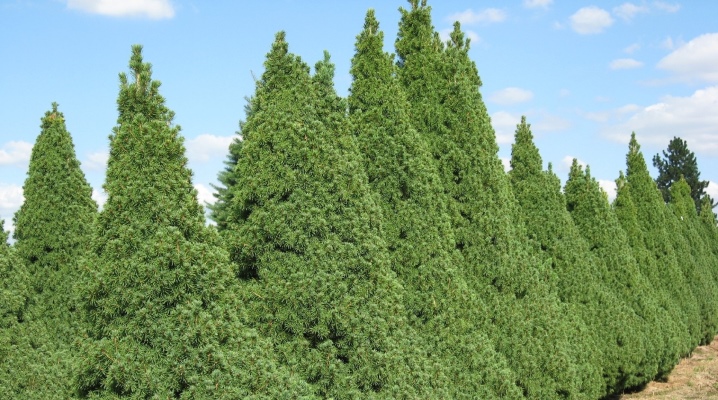
Canadian spruce is a beautiful coniferous tree that has many subspecies. It is also called white or gray spruce, and in Latin its name sounds like "glauka". At home, in its natural habitat, this spruce grows up to 20, or even up to 40 meters, but in our country only its shorter varieties have taken root. There are varieties that retain dwarf sizes for more than 10 years, which is very valuable when creating a landscape composition on a site. What popular varieties of this conifer exist and how to care for Canadian spruce so that it delights its owners with its elegant look for many years, we will tell in this article.

Description
Canadian spruce is especially popular in comparison with its pine "congeners". It was exported outside Canada in 1700 and has been cultivated in various countries since then. At a young age, the trees have densely knocked down branches, directed upwards, but with age they sink. It is possible to collect cones from these spruces only after 10 years. The life span of Canadian spruces is quite long - from 300 to 500 years. Glauka has about 20 varieties, we will describe the most popular of them below.
Canadian spruces are loved by landscape designers, as their colors and crown shape give a wide scope for imagination.
Among the varieties there are spherical, conical and cushion trees that can decorate a variety of compositions.
Few know that Canadian spruce is a symbol of the Canadian province of Manitoba and the North American state of South Dakota... In the Botanical Garden of the Russian Academy of Sciences, marks appeared about it back in 1816. It takes root well in both maritime and continental climates. Due to its windproof properties, it can be planted specifically for these purposes. Compared to European spruce, it reacts less to gas pollution and smoke content in the air.
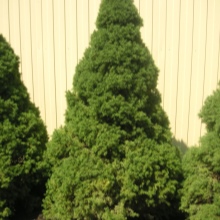
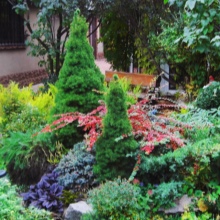
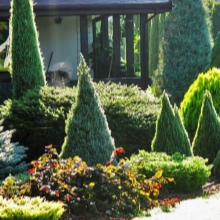
Varieties
"Konika" - This is the most popular type of Canadian spruce. Trees grown in open ground and in containers look good, they effectively decorate rocky gardens and terraces. This glauca can reach a height of 4 meters at the age of 60. "Konika" is loved for its blue color, which can dilute green landscape compositions. Its legs fold into a dense crown in the shape of a pyramid. It grows rather slowly, which allows it to be successfully connected to compositions.
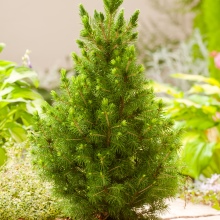
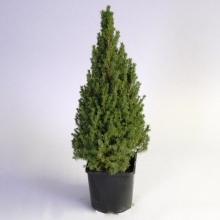
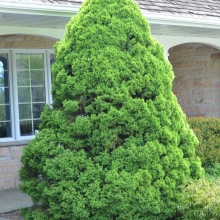
"Ehiniformis" has a really modest size - at the age of 30, its growth turns out to be no more than half a meter. However, over the years, its height reaches 25 to 35 meters. While the tree is young, its crown resembles a ball, and over time it acquires a cushion shape. In compositions, she does not cast a shadow on her smaller neighbors, which is her plus, and at the same time she is able to decorate any ensemble.
This species loves slightly acidic earth and light, although it can adapt to partial shade.

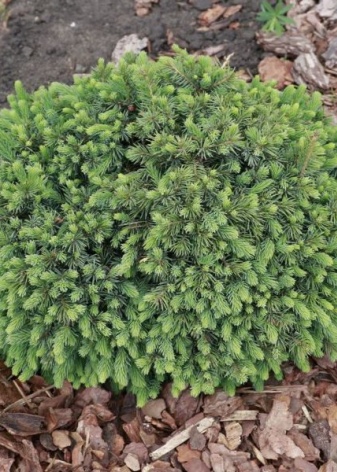
Daisy similar to "Konika", but has a different color. At 10 years old, her growth can reach 80 cm. She is afraid of the March sun, she looks most beautiful in late spring and early summer, when yellow shoots appear on her. Successfully complements the heather garden and rock garden.
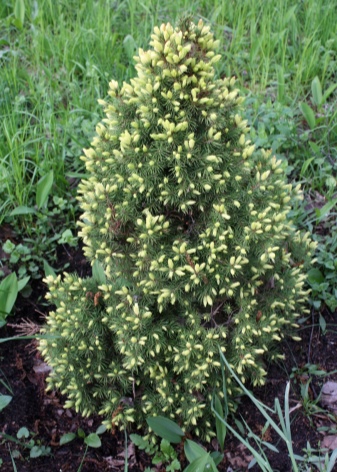
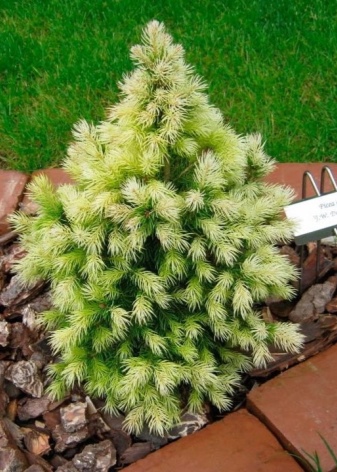
"Alberta" has almost the same length and width - about a meter. Its needles are light green in color, and the needles can grow up to 9 mm.Landscape designers love its rounded shape and complements heather or stone gardens well.
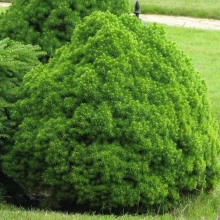
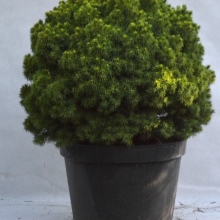
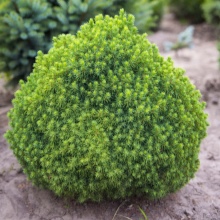
Sanders Blue named so for its unusual blue color. Its shape resembles a cone, but rather narrow. At 10 years old, the height of these trees does not exceed 70 cm. In order for its needles to grow beautiful and not lose their unusual silvery-blue hue, it is recommended to shelter it from the sun for the first two years. This spruce is a little capricious, as it does not tolerate excessive moisture and drought. Can become prey for spider webs. Suitable for stone and winter gardens.
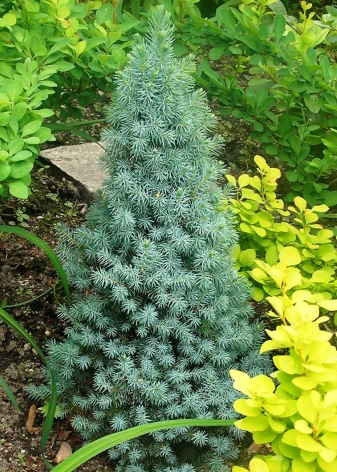

"Perfect" - spruce with hanging branches, which is why its shape is called weeping. The green color with a blue tint makes it even more attractive for summer residents and landscape designers. Does not tolerate intense heat without rain and excessive soil moisture.
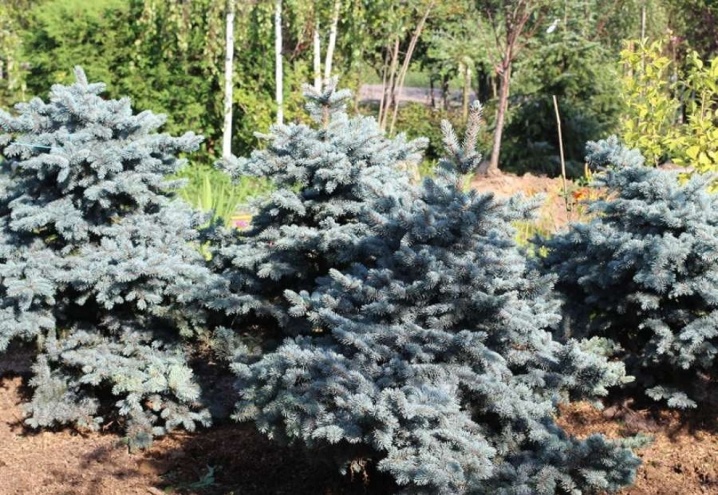
Rainbows End - dwarf cone-shaped plant, grows no more than a meter per year. Two increments appear on it over the course of a year. In the summer, the spruce turns yellow, and in the less sunny part of the year, it turns green again. If the tree grows in the sun, then it will retain its golden color longer, but in March and April it must always be sheltered from the sun, otherwise it will suffer from the scorching rays.
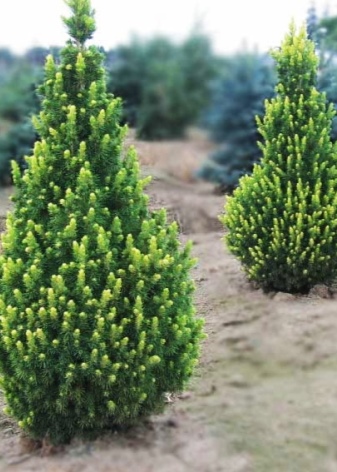

"The radiant sun" Is a popular variety that has many advantages. Its crown is rather knocked down, has clear conical outlines.
Young shoots are distinguished by yellow tassels, while the main color of the needles of this variety is blue-green. Loves the bright sun, grows up to the meter mark.
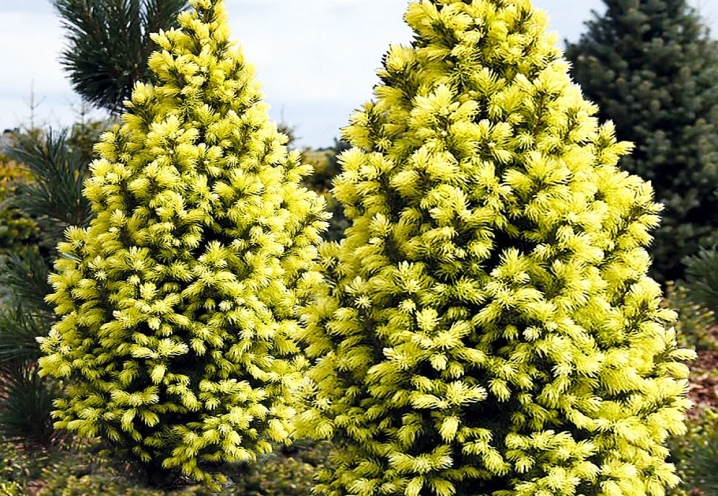
How to choose?
Before you go to the nursery or the market for a new green beauty, think about what characteristics she should have. If you adhere to a certain gardening scheme for a summer cottage or a local area, then the size and growth rate of the tree will be an important parameter for you. But let's talk about everything in order. So here are the points to look out for when making a purchase.
- Resistant to weather conditions. For spruces, such a criterion as winter hardiness is very important. Most varieties have the above property, but in some it is more pronounced, while in others it is weaker. Also pay attention to the resistance of the spruce to sunburn. If you do not have the opportunity to cover the tree in March-April, then it can be seriously affected by the spring rays.
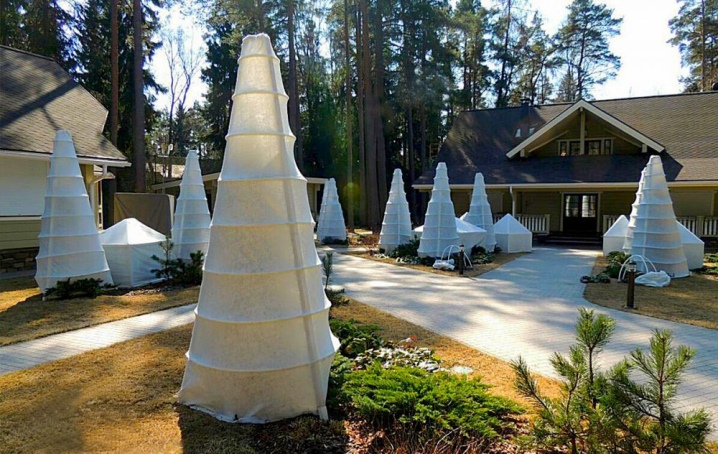
- The shape of the tree. If you are tired of classic-shaped Christmas trees or they are already present on your site in sufficient quantities, then pay attention to the green beauties of an unusual shape. There really is a choice: trees on the headquarters, with a pillow or spherical shape, weeping with hanging branches.
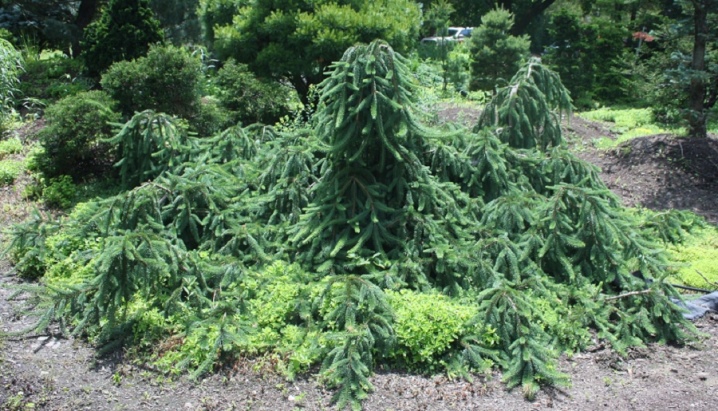
- Needle color. Here, too, there is something to think about, because green has so many shades. There are spruces with needles closer to a light green hue, there are deep green, there are blue ... All of them seem to be sprinkled with frost, because it is not without reason that glauka got its second name - gray spruce.

- Needle shape. The general appearance of the tree will depend on the length of the needles and their density. If the needles are sparse, then the crown will be with gaps, if it is dense, then the light will hardly penetrate through its fluffy paws. Yes, and aesthetically, everyone chooses his own: some seem more attractive short needles, while others - long.
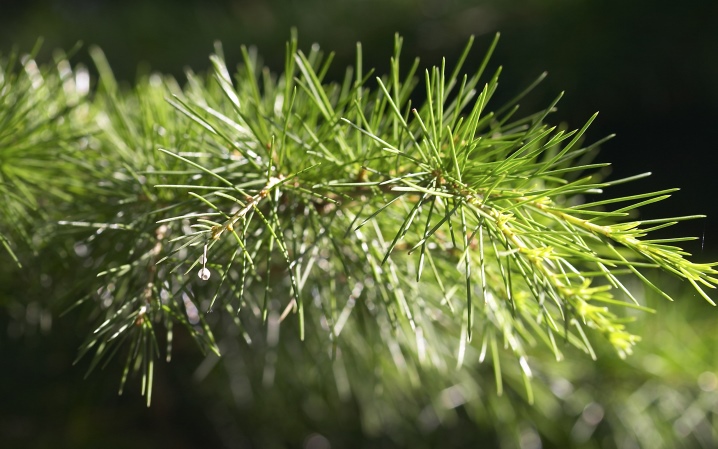
- Final size and growth rate. What a tree will become in 10 years, and what in 50, depends on its type. Check with your retailer for this information, as all glauka varieties have different characteristics of size and growth rate.
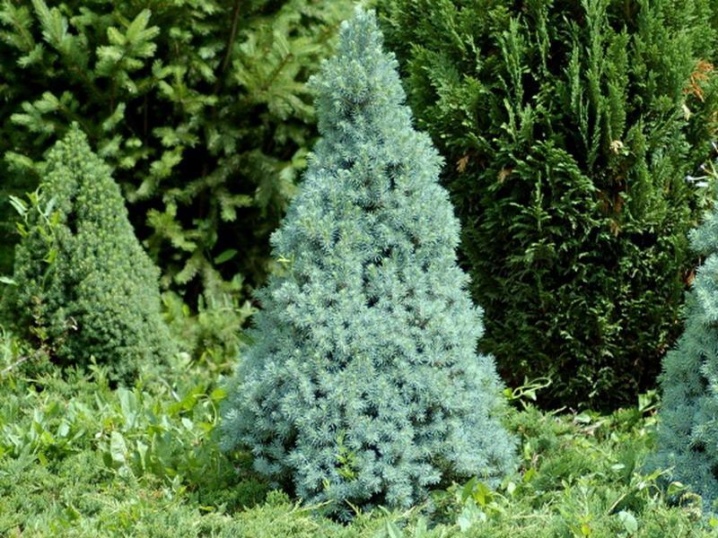
How to grow?
Experts in the field of spruce cultivation recommend a responsible approach to their planting. Despite the unpretentiousness of these plants, there are nuances that should be taken into account.
Seat selection
The place for the spruce is usually chosen, guided by one of the principles. The first is that the spruce is purchased as a single New Year's tree, which should take pride of place on the site and be available during the holidays - so that it can be decorated and led round dances. The Christmas tree should be visible from the windows of the house, and even better, if it is visible from the street.
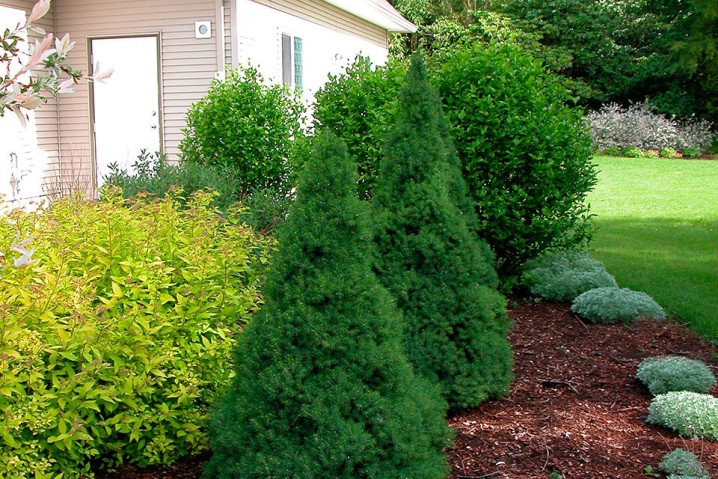
In this case, it is usually simply planted on a lawn illuminated by the sun, and they do not think about the neighborhood of the tree with other plants.
Another case is when one or several fir trees are bought to decorate a plot as part of a landscape composition.This is usually done by more experienced gardeners. They carefully make sure that the conditions in a particular area contribute to the normal growth of the spruce - this is the correct composition of the soil, optimal moisture, illumination, because only when an optimal environment is created, the spruce will bloom in all its glory. They also take into account the presence of other plants in the neighborhood - the spruce should not block the light of light-loving specimens. For example, the lawn grasses under its branches will be too dark.
It is important to take into account the requirements of a particular variety of Canadian spruce and create the most comfortable conditions for it., because there are more and less capricious varieties. The basic rule is typical for most of them: for the growth of a beautiful dense crown of spruce, the site must be well lit, and at the beginning of spring the tree must be sheltered from the rays in order to prevent burns.


Landing
To prepare a place for the Christmas tree, the soil should be dug to a depth of 40 cm and fertilized. It is best if the application of rotted manure is carried out at the rate of 10-20 kg per 1 square meter of area. You can use a combined NPK fertilizer, the dosage is from 80 to 100 grams per square meter. Sandy soil will not have the best effect on the growth of the tree, so it is better to dilute it with fertile loam or sod soil.
Spruce with an open root system is transplanted in the fall or early spring. If the process still takes place in the summer, then it is better to choose a cloudy day for this. For two weeks, the tree is actively watered, and then they create a comfortable shade for it during rooting.
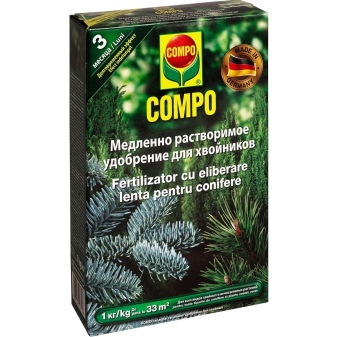
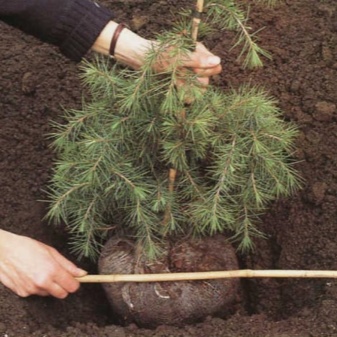
Watering
Young trees require abundant watering - 10-12 liters of water each. This is especially important in the fall, since in winter they may not survive due to a lack of moisture, which is much worse for them than the cold weather. Adult ate does not need as much water as young growth. Still, glauca is classified as a drought-resistant tree.

Top dressing
Canadian spruce is very fond of mulching the soil, this is an important component of caring for it. Thanks to this procedure, the soil retains moisture better. In addition, due to mulching, weeds do not grow so actively and do not take nutrients and water from the tree. To mulch, use sawdust, peat or tree bark.
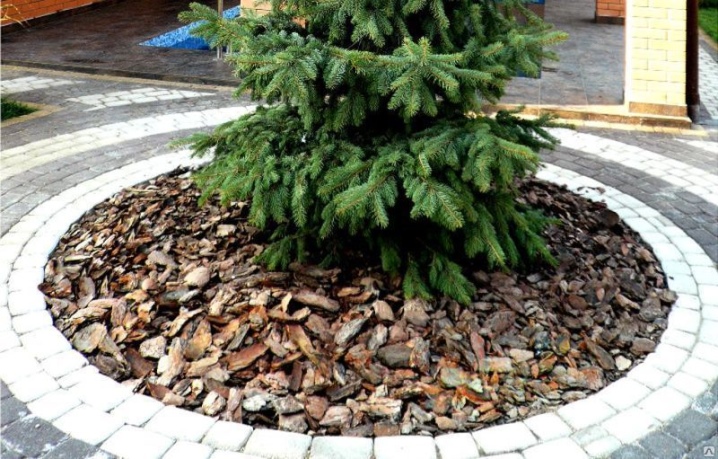
Pruning
Many gardeners, for decorative purposes, prune excessively protruding or dried, black branches, although glauca naturally tends to maintain a beautiful shape. To maintain the natural beauty of the tree, pruning is sufficient once a year. In the course of it, elements that have lost their appearance are removed, and the crown is also slightly adjusted if necessary.
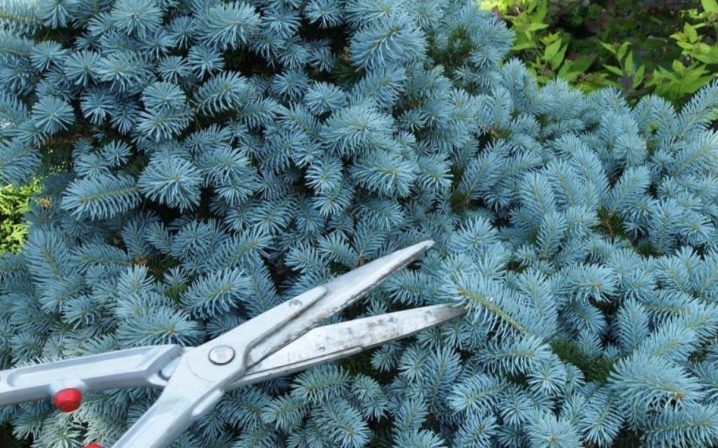
Growing in a pot
Growing Canadian spruce in a pot is a fun and enjoyable process. A small tree can please the eye and decorate the interior. For a homemade coniferous plant, you need acidic soil. Purchase ready-made soil for needles or mix one part of the standard earthen mixture and earth brought from a coniferous forest.
Due to the scorching sun, the twigs of a potted spruce may turn yellow, and they will not return to their previous appearance. To prevent damage to the remaining branches, it is necessary to normalize the conditions of the plant and sprinkle it with bioregulators, which are used as an emergency aid. If the soil is not sufficiently oxidized, then the needles may dry out and wrinkle. This can be stopped by replacing the top layer of the earth with spruce soil, while avoiding exposing the roots and maintaining the level of the ground.
As you can see, caring for a home potted glaucus is not so difficult, it grows quickly enough, and having reached its final size, it will retain its usual shape for many years.

Diseases
The root system of Canadian spruces is often prey for various insects. It is attacked by bears, wireworms, May beetles and other inhabitants of vegetable gardens.Fighting spruce pests is not so easy, sometimes it takes a lot of time and patience, and specialized preparations are not always cheap. Now more and more often you can hear that the needles are suffering from the invasion of the spruce false shield. These round insects are eliminated with the help of the preparations "Engio", "Calypso", "Confidor" and "Maxim".
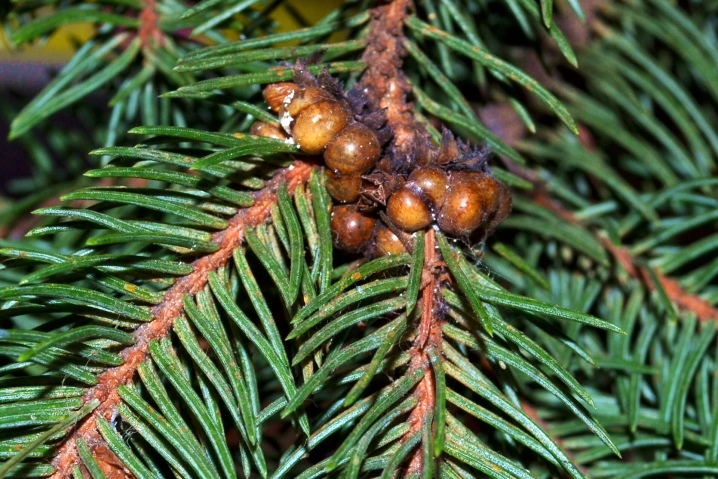
Infections can also ruin glauca life. Among the modern misfortunes, it is worth noting the dotystrome. The disease was identified in Ukraine in 2005 and since then, mentions of it periodically come from different regions. With its development, spruce trees dry out and needles fall off. You can see the onset of the disease by the transverse red or red-brown stripes on the needles. It is not easy to defeat the dottystroma, therefore the experts recommend that the spruce be prophylactically treated with the preparations Falcon, Zantara or Zato.

To avoid drying out of the spruce, keep an eye on the moisture content of the soil. During the summer heat, mature trees are watered twice a week. Mulching the soil around the trunk will help maintain a normal moisture reserve in the soil. As with any plants, root diseases are possible in Canadian spruce. For prevention use drugs "Maxim", "Baikal EM-1". In general, it is worth noting that if the owner of the site adheres to the principles of agricultural technology, then diseases on his site are rare.
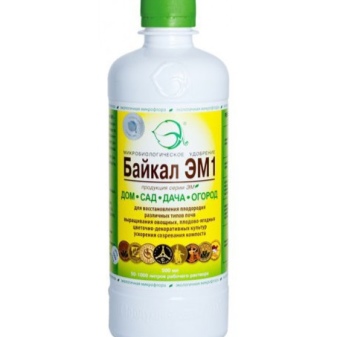
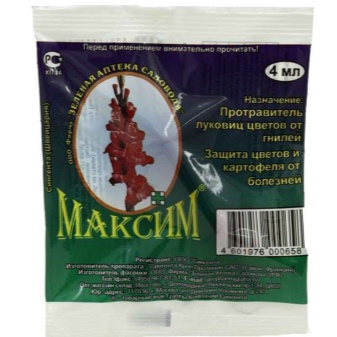
How to prepare for winter?
Although most Canadian fir trees are not afraid of the cold, they still need to be prepared for winter, and it is better to do this in advance. The fact is that in winter the tree is harmed not so much by low temperatures as by a lack of moisture in the soil. At the end of August, fertilizing with nitrogen fertilizers ends - this is done to prevent the appearance of new shoots, which still will not survive the cold period. In late autumn, you need to provide your conifers with abundant watering, which is called podzimny. Water is poured not only around the trunk, but also along the entire circumference from the trunk to the tips of the branches, that is, at a distance of about half a meter in all directions. If the spruce was not watered correctly in the fall, then in the spring you will see that the needles dry out from the sun and wind, the needles become faded and dry.
It is also very important to mulch the soil around the trunks with sawdust. This is necessary primarily for young shoots planted this or last year. In the spring, the mulch is removed for the soonest warming up of the earth in the sun.
Some gardeners, on the eve of winter, also strengthen young trees with screeds and wrap them up, leaving only the bottom of the trunk uncovered, and if winter passes in the region with a blizzard, then it is not superfluous to cover the crown of young trees.
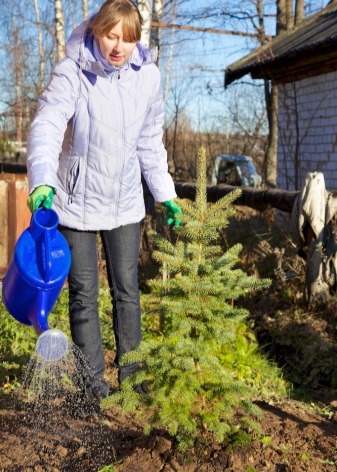
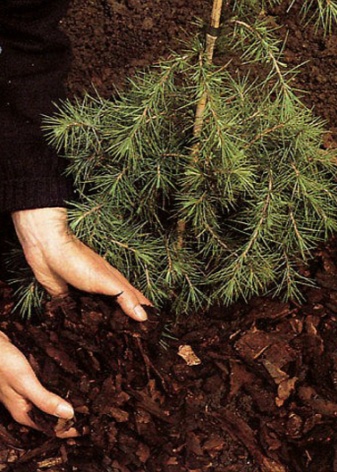
Potted spruce also needs special conditions in winter. Find the coldest place for her in the house, for example, the north window sill, the gap between the frames, a loggia, a veranda. In the cold season, she will be most comfortable at temperatures from 0 to 10 degrees. If it is significantly higher than these marks, then this will negatively affect the health of the tree. The fact is that winter is a dormant period for spruce trees, and it can only be ensured in low temperatures.
It must be watered so that the earthen lump is constantly wet. In winter, it is enough to do this every 2-3 weeks. If the temperature in the room has dropped below 0, then the tree will most likely be able to survive this cold snap, but then watering should be done no more than once a month.
On New Year's Day, you might want to decorate your potted beauty with a small garland, toys, or tinsel. It is possible, but keep it in its place where the temperature is cool enough. You can take it into the room to decorate the festive table, but only for a few hours, so that the tree does not die in the heat.

Reproduction methods
You can get offspring from glauka in various ways - by seeds, cuttings, seedlings.The first method is the longest and most painstaking, the grafting method will also be quite difficult for an ordinary gardener. The easiest way is Canadian spruce propagated by seedlings. To do this, you need to take the lower matured branch, which has reached a length of 10 centimeters. Also prepare a transparent pot with a lid to create a greenhouse effect, and lay a layer of moss underneath to keep moisture in good condition before sprinkling the soil.
After the stalk is received, its bottom must be freed from the needles, cleaned so that the stem is visible. Then it is treated with a rooting stimulant according to the instructions and immersed in a pot of earth for a couple of centimeters. As a soil, a standard earthen mixture from a store is suitable. Further, at all stages of the growth of the cutting, he needs to ensure sufficient watering.
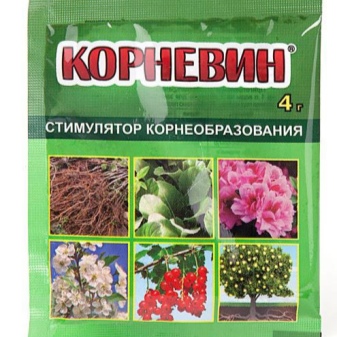
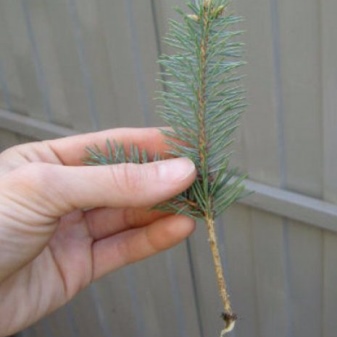
Examples in landscape design
Canadian spruce is a favorite of landscape designers, because it is a key link in many compositions. Thanks to a wide range of varieties, craftsmen create simply chic landscaping projects. Glauka looks good not only when surrounded by other plants, it can be planted in combination with its "brothers" of other varieties. However, for each variety, separate recommendations are given by landscape designers and we have already described them above.
A rather interesting use of Canadian spruce planted in pots is roof decoration. Thanks to the tightly packed containers, a kind of green roof is formed on its surface. Glauka is often planted near houses, on terraces and in gardens. Decorative glauks are good among other undersized spruce and rock gardens. They look spectacular as a background in front of flower beds.
Even an ordinary smooth lawn is transformed if a decorative Canadian herringbone appears in the center of it.
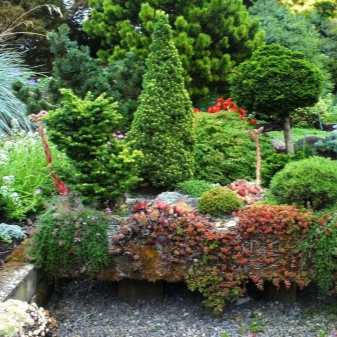

Among the variety of Canadian firs, varieties of different shades of green, as well as blue, are distinguished. Regardless of the color, they all look as if they were covered with fresh frost, which gives them a special charm. Having planted such a beauty on your site, you can admire her fluffy needles for a long time. The main thing is to create comfortable conditions for the tree and not forget about disease prevention.
For information on the types of Canadian spruce, see the next video.



































































The comment was sent successfully.